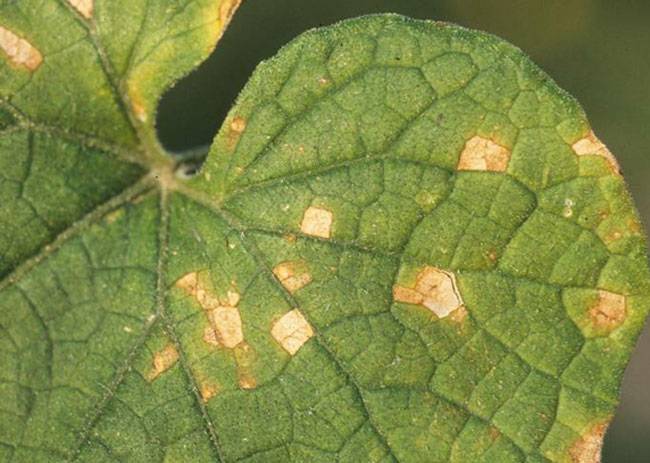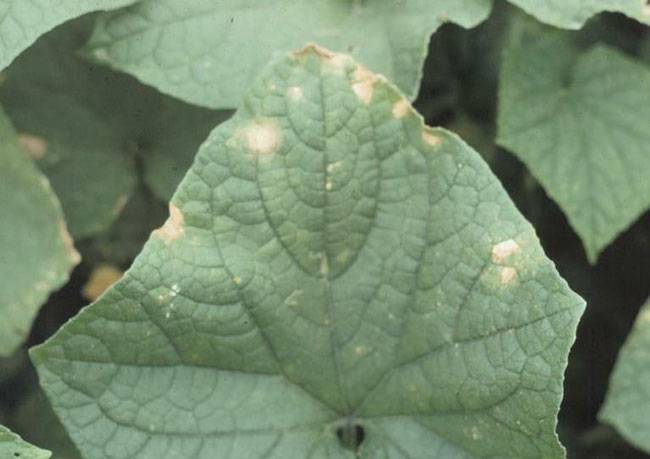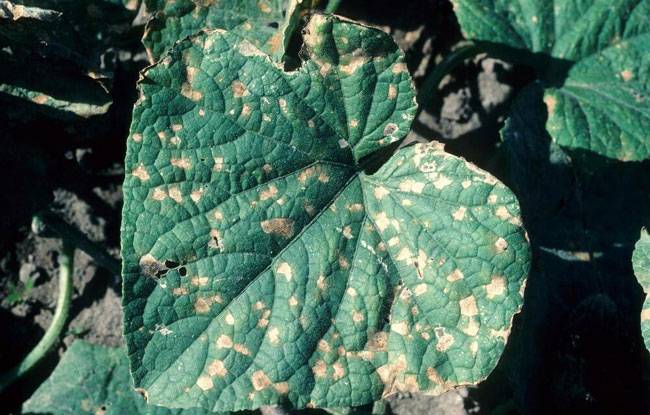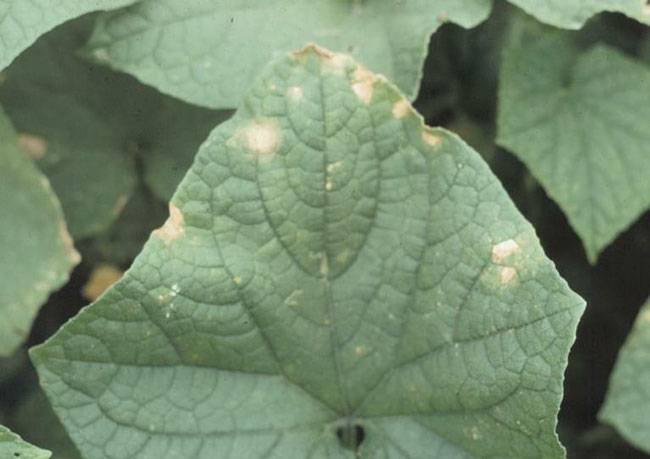Target spot of cucumber, caused by Corynespora cassiicola, is a fungal disease that significantly impacts cucumber production. It is particularly problematic under humid conditions and moderate temperatures, causing damage to leaves and fruits, ultimately reducing yield and fruit quality.
Key Points About Target Spot of Cucumber
1. Symptoms
- Leaf Symptoms:
- Angular yellow spots appear on older leaves.
- Spots enlarge, become circular with light brown centers and dark margins.
- Mature lesions turn gray, and affected tissue drops out, leaving holes in the leaves.
- Fruit Symptoms:
- Infected fruits show darkening and shriveling at the blossom end if infected early.
2. Cause
- Pathogen:
- Fungal pathogen Corynespora cassiicola.
3. Favorable Conditions
- Humidity and Temperature:
- High humidity promotes disease development.
- Optimal temperature range: 20–30°C.
- Sporulation is most active at 27.5–30°C.
4. Disease Persistence
- The fungus can survive on plant debris for over two years, acting as a reservoir for future infections.
5. Management Strategies
- Cultural Practices:
- Remove and destroy plant debris to reduce inoculum.
- Ensure proper spacing and good air circulation to lower humidity around plants.
- Preventive Measures:
- Avoid overhead irrigation during periods of high humidity.
- Use resistant cucumber varieties, if available.
- Chemical Control:
- Apply fungicides during favorable weather conditions to protect plants.
Target spot caused by Corynespora cassiicola is a persistent fungal disease that thrives under humid and moderate temperature conditions. Timely identification of symptoms, adoption of preventive measures, and proper cultural practices are essential to minimize its impact on cucumber production and ensure healthy yields.








